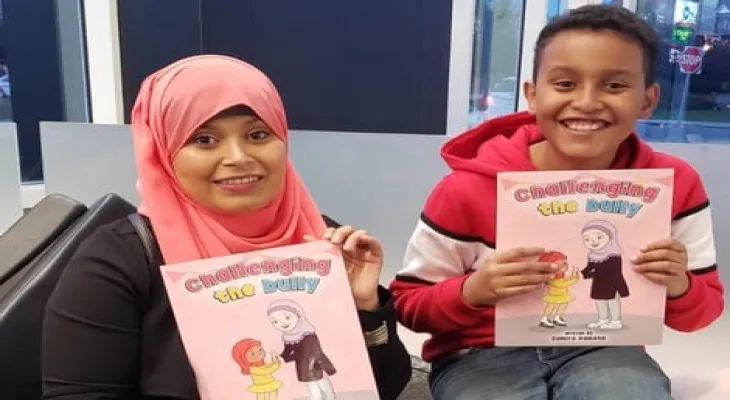Search here
Newspaper
Search here

Arab Canada News
News

Published: July 29, 2021
Agencies:
Moroccan writer residing in Canada Samira Hamana opens the pages of expatriation in the farthest regions of North America, facing the first obstacles that stand in the way of immigrants arriving in Canada, and answering a question that remained stuck and is usually asked of the expatriate: “Where are you from?”, in an “existential battle” opened by the writer to confront racism and bullying within Canadian society.
The Moroccan writer, in a statement to Hespress electronic newspaper, points out that “the book is like a graphic story,” adding: “Where are you from? is a question asked to immigrants and their children; in the world of adults it is considered a racist question, but in the world of children it may be a question of curiosity only.”
The writer residing in Canada emphasized, while conveying the details of the story, that her heroine “when this question was asked, she replied that she is from here (meaning Canada), but they did not believe her; so she resorted to her teacher who told them that they are all from here except they have different origins, except for one student who is from here and her origins are from here, she is indigenous.”
Hamana explained that “the protagonist understands why her friends look different, this is simply due to their different origins; the teacher explains to her that the difference is beautiful, nature is beautiful with its different scenes and Canada is beautiful with its diverse people.”
The Moroccan writer said that “the issue is very important, especially after hijab-wearing women were subjected to unusual attacks in Canada; also, accepting others starts from schools and books,” highlighting that she wrote this book “after hijab-wearing women were subjected to racist attacks.”
Hamana faces the phenomenon of bullying and racial discrimination suffered by children and immigrants, whether in schools or public facilities, through writing, as she has previously published a graphic story for children that attracted significant media interest in Canada and was displayed in 21 public libraries.
Earlier, the Moroccan writer issued a book about bullying supported by animated pictures directed at children, especially the children of immigrants in Canada who are more vulnerable to bullying, where Hamana confirmed that “immigrants are exposed to bullying at a higher rate than others, due to their different appearance and sometimes their language.”
Samira Hamana published her story to help children challenge bullying and overcome it, stating that “the inspiration for the story is a Syrian girl who committed suicide because of bullying and mockery of her appearance with the hijab in Canada,” concluding: “The child must challenge bullying and strive to achieve their goals, despite their different appearance from others; and when subjected to bullying they should turn to their parents and be honest with them.”
Comments